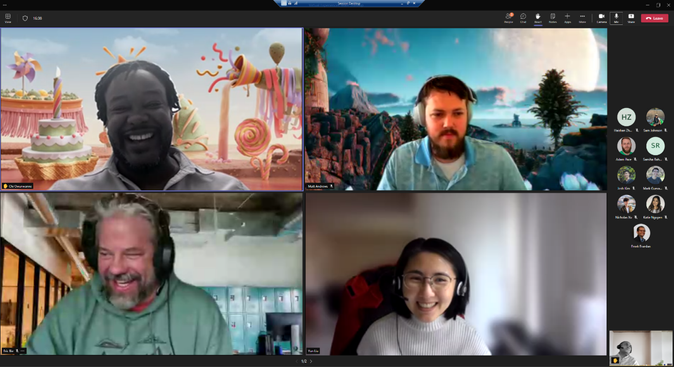Microsoft Teams background effects is now generally available on Azure Virtual Desktop

We are happy to announce that Teams background effects is generally available on Azure Virtual Desktop.
Now, users can make meetings more personalized and avoid unexpected distractions by applying background effects. Meeting participants can select one of the available images to change their background or choose to blur their background. Background effects helps to keep the focus on the conversation while bringing new ways to meet face to face. Background blur subtly conceals everything in the background while the participant’s silhouette remains clear and isolated.
Getting Started
To use Teams background effects on Azure Virtual Desktop, please install Teams Desktop Client version 1.5.00.11865 (download MSI here, download EXE here) or later. The minimum WebSocket service version required is 1.1.2111.01001, and the minimum Windows Desktop Client version is 1.2.3004. Please refer to Change your background for a Teams meeting on how to turn on background effects.
Note: Blurring your background might not prevent sensitive information from being visible to other people in the call or meeting.
Setup Teams on Azure Virtual Desktop
New to the service? Refer to the Teams on Azure Virtual Desktop documentation on how to setup Microsoft Teams.
Teams background effects is also available on Windows 365. To learn more, go to https://aka.ms/W365TeamsBackgroundEffects.
Published on:
Learn moreRelated posts
IntelePeer supercharges its agentic AI platform with Azure Cosmos DB
Reducing latency by 50% and scaling intelligent CX for SMBs This article was co-authored by Sergey Galchenko, Chief Technology Officer, Intele...
From Real-Time Analytics to AI: Your Azure Cosmos DB & DocumentDB Agenda for Microsoft Ignite 2025
Microsoft Ignite 2025 is your opportunity to explore how Azure Cosmos DB, Cosmos DB in Microsoft Fabric, and DocumentDB power the next generat...
Episode 414 – When the Cloud Falls: Understanding the AWS and Azure Outages of October 2025
Welcome to Episode 414 of the Microsoft Cloud IT Pro Podcast.This episode covers the major cloud service disruptions that impacted both AWS an...
Now Available: Sort Geospatial Query Results by ST_Distance in Azure Cosmos DB
Azure Cosmos DB’s geospatial capabilities just got even better! We’re excited to announce that you can now sort query results by distanc...
Query Advisor for Azure Cosmos DB: Actionable insights to improve performance and cost
Azure Cosmos DB for NoSQL now features Query Advisor, designed to help you write faster and more efficient queries. Whether you’re optimizing ...
Azure Developer CLI: Azure Container Apps Dev-to-Prod Deployment with Layered Infrastructure
This post walks through how to implement “build once, deploy everywhere” patterns using Azure Container Apps with the new azd publ...
